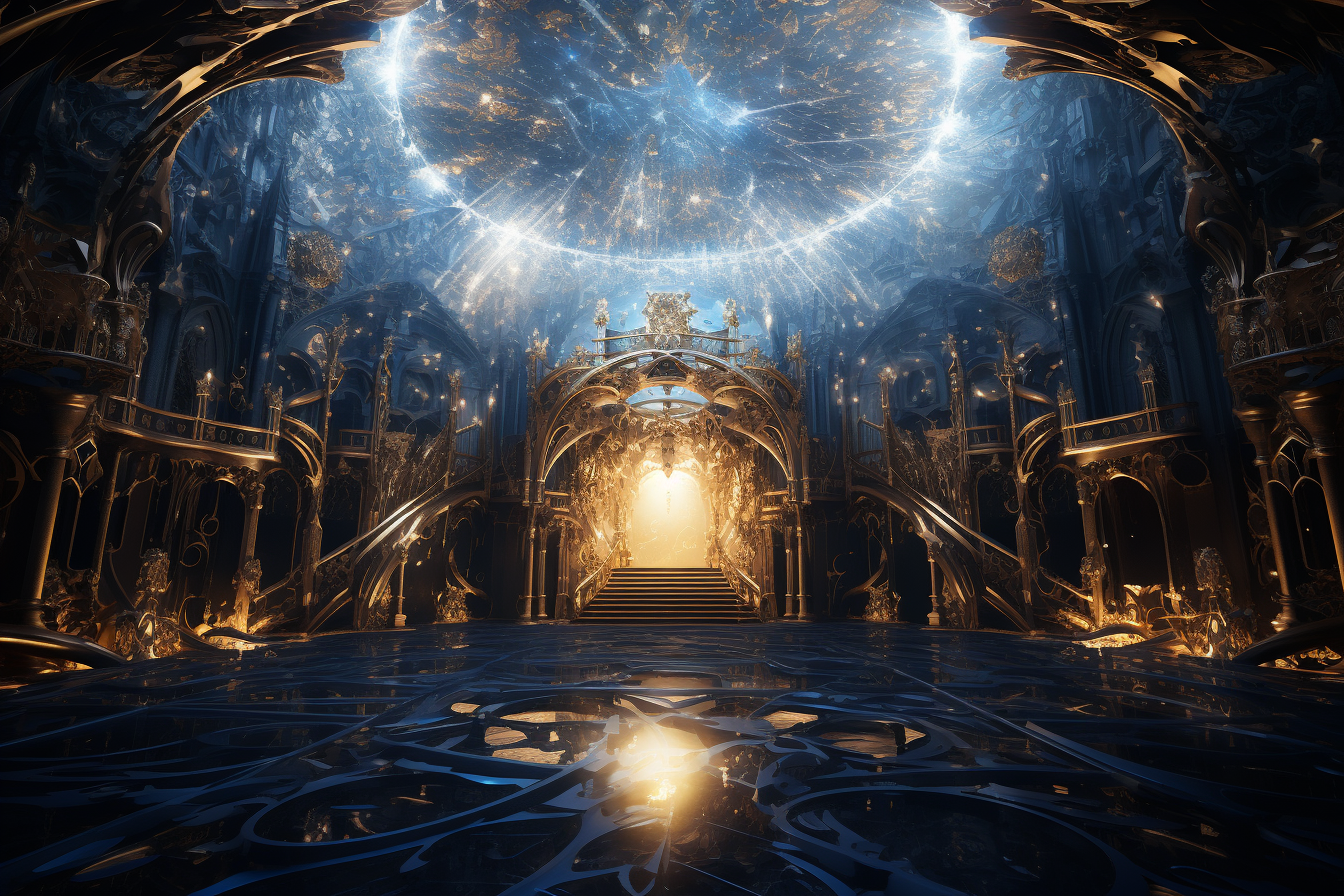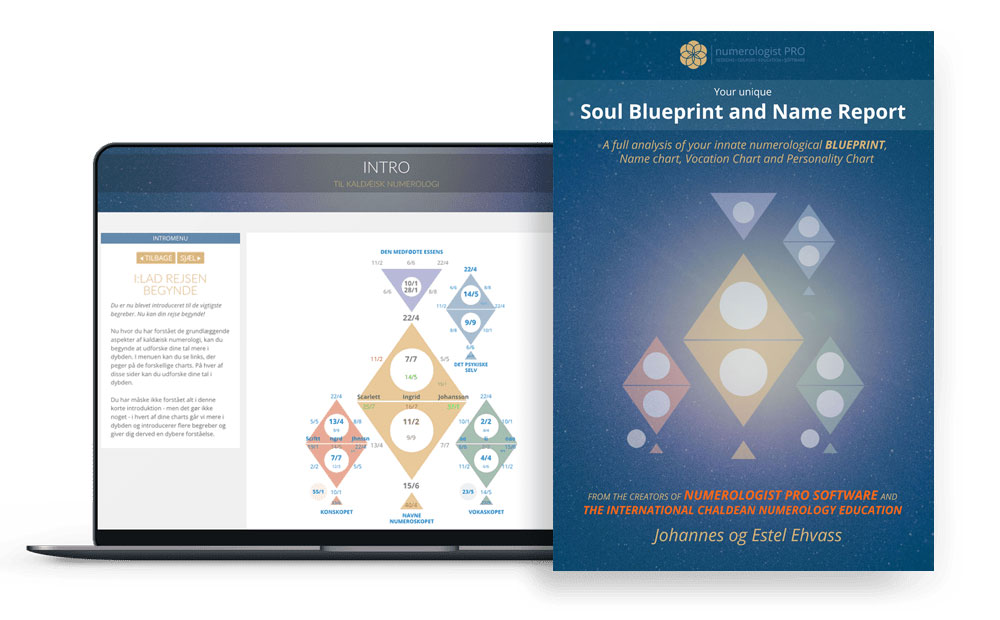The Holographic Universe: As Above, So Below

Johannes Ehvass
Welcome, dear reader! My passion for the mystical and metaphysical realms has led me to an enduring fascination with the hermetic holographic principle. This intriguing concept suggests that the entirety of the universe is reflected in each of its parts, a perspective that resonates deeply with my work in both astrology and numerology. As we navigate these ancient practices, the holographic principle offers a unique lens through which we can view the cosmos and our place within it. Beyond traditional interpretations, this approach allows us to explore the interconnectedness of all things and the profound patterns that underpin our existence. Join me as we delve into the cosmic dance of numbers and celestial bodies, uncovering insights guided by the hermetic holographic principle and its profound implications in astrology and numerology.
Introduction to Hermeticism

Hermeticism, a mystical and philosophical tradition, traces its roots back to the Hellenistic period, centered around teachings attributed to Hermes Trismegistus, a legendary figure often identified with the Greek god Hermes and the Egyptian god Thoth. These teachings, chronicled in the Hermetic Corpus, a collection of esoteric texts, hold the essence of this spiritual path, which has permeated numerous disciplines over millennia.
Although Hermeticism encompasses a vast array of beliefs, it revolves around a core tenet: the belief in a single, unified truth that connects all philosophical and religious systems. This singular truth, in essence, underscores the interconnectedness of all existence. By studying Hermeticism, one embarks on a journey towards understanding the harmony that binds the cosmos, humanity, and the Divine.
The Renaissance period witnessed a resurgence of Hermetic thought, as scholars rediscovered Hermetic texts and incorporated their teachings into the budding fields of science, art, and philosophy. This revival bridged the gap between spirituality and rationality, a testimony to Hermeticism’s timeless appeal.
The Central Principle: “As Above, So Below”
The phrase “As Above, So Below” succinctly captures the essence of Hermetic thought. This axiom, profound in its simplicity, denotes the mirrored relationship between the macrocosm (the vast universe) and the microcosm (individual beings). It suggests that patterns observed in the cosmos can also be found on Earth and within the individual.
This principle highlights the inherent connection between the different planes of existence. Just as the movements of celestial bodies influence events on Earth in Hermetic astrology, the thoughts and actions of individuals can resonate and manifest in the wider universe. It’s an affirmation of the belief that understanding oneself can pave the way to understanding the universe, and vice versa.
It’s not just a mere philosophical concept; this principle has practical implications. Ancient alchemists, influenced by Hermetic teachings, believed in the possibility of transmutation, turning base metals into gold. They perceived this not just as a physical transformation but also as a spiritual one, representing the soul’s journey towards enlightenment and perfection. The axiom served as a reminder that transformations happening within the individual could affect the outer world.
“As Above, So Below” in Art, Architecture, and Ancient Symbols
The influence of the Hermetic axiom isn’t limited to esoteric teachings. Its footprint can be found in numerous masterpieces of art, architectural marvels, and symbolic representations across diverse cultures.
For instance, the meticulous design of Gothic cathedrals in medieval Europe reflects the Hermetic principle. These structures, with their towering spires reaching towards the heavens and intricate patterns mirroring celestial constellations, embody the connection between the earthly and the divine. Their design aimed to draw the gaze upwards, suggesting a spiritual ascent and echoing the “As Above, So Below” motif.
In art, the renowned works of Leonardo da Vinci, like the Vitruvian Man, encapsulate this principle. The drawing, which showcases a man in both a square and a circle, emphasizes the harmony between human proportions and the geometry of the cosmos. Da Vinci’s fascination with the interconnectedness of nature and the human form can be traced back to Hermetic beliefs.
Ancient symbols, too, carry the weight of this principle. The Ouroboros, a snake or dragon eating its tail, often found in Egyptian iconography and later in Gnostic texts, represents the cyclical nature of the universe. It’s a symbol of eternal unity, where the end is the beginning, resonating deeply with the Hermetic belief in the interconnectedness of all things.
Another profound representation is the Yin-Yang symbol from Taoist philosophy. While not directly stemming from Hermeticism, it echoes the same sentiment. The interplay of opposites, light and dark, male and female, signifies the harmonious balance of the universe. It’s a visual affirmation of the “As Above, So Below” principle, highlighting that duality coexists and reflects in every layer of existence.
This article segment delves into the ancient wisdom of Hermeticism, its most pivotal principle, and its resonating influence across various facets of human expression. The journey from understanding this ancient path to recognizing its imprints in the world around us offers profound insights into the interconnected tapestry of existence.
Introduction to the Holographic Universe Theory
The modern world thrives on its relentless quest for understanding the vast intricacies of our universe. Among the groundbreaking theories that have emerged in the latter half of the 20th century, the Holographic Universe Theory stands out, capturing the imagination of both scientists and philosophers alike. But what exactly is this theory, and how does it connect to the ancient wisdom of Hermeticism?
The Holographic Universe Theory posits that the entire universe can be seen as a two-dimensional information structure “encoded” on the cosmological horizon, such that the three dimensions we observe are merely an informative projection of this two-dimensional horizon. In simpler terms, just as a hologram functions—where a three-dimensional image is encoded in a two-dimensional surface—the universe itself might function in a similar manner, with every part containing information about the whole.
The origins of this theory trace back to the 1960s and 1970s, through the work of scientists like David Bohm and Karl H. Pribram. Bohm, a protege of Einstein and one of the notable physicists of the 20th century, was instrumental in developing the theory of quantum potential, which led to his insights into the holographic nature of the universe. Meanwhile, Pribram, a neurophysiologist, delved into the holographic nature of the brain and its memory functions. Their combined insights laid the groundwork for a new understanding of reality—one that challenges our traditional notions of space, time, and objectivity.
Remarkably, this cutting-edge theory echoes the Hermetic principle of “As Above, So Below.” The idea that every part of the universe contains a reflection of the whole is a fundamental tenet of the Holographic Universe Theory and aligns seamlessly with the Hermetic belief in the interconnectedness of macrocosm and microcosm. Such synchronicities, where age-old wisdom converges with modern scientific thought, underscore the timeless relevance of Hermetic teachings.
The Holographic Universe: An Echo of Hermetic Thought
The Holographic Principle, which is at the heart of the Holographic Universe Theory, suggests that the behavior of gravity in a given region of space can be explained by the information housed on the boundary of that region. This aligns with the age-old mystical belief that the knowledge of the outer universe can be gleaned from understanding its smaller manifestations, a thought central to Hermeticism.
But how does this principle manifest in our observable reality? Let’s delve into some captivating examples:
The Iris of the Eye: Every iris has a unique pattern, much like fingerprints. Beyond mere identification, certain traditions, such as Iridology, believe that the iris can reflect the health and state of the entire human body, acting as a window into a person’s overall well-being.
The Palm of the Hand: Palmistry, an ancient practice, holds that the lines and structures of the palm reflect an individual’s personality, life path, and even potential future events. The hand becomes a microcosm of the individual’s journey and destiny.
The Sole of the Foot: Reflexology operates on the principle that different parts of the foot correspond to organs and systems of the body. By massaging or applying pressure to specific points on the foot, one can potentially address ailments in the corresponding body parts.
Fractals in Nature: Fractals, infinitely complex patterns that look the same at any level of magnification, are abundant in nature, from fern leaves to snowflakes. This self-similarity across scales is a beautiful manifestation of the holographic principle in the natural world.
The Solar System and Human Psyche in Astrology: In astrology, the positions and movements of celestial bodies are believed to influence human affairs and the natural world. Each planet and constellation corresponds to different facets of the human psyche and experience. This cosmic dance, where the vast macrocosm of the universe resonates with the microcosm of human emotions, desires, and fates, encapsulates the essence of the Hermetic principle.
In conclusion, the Holographic Universe Theory, while rooted in modern physics and neuroscience, finds astonishing parallels with the age-old teachings of Hermeticism. As we venture deeper into understanding the cosmos and our place within it, it becomes evident that the ancient sages, with their profound insights, were perhaps on to something. Their wisdom, encapsulated in the axiom “As Above, So Below,” resonates with us even today, reminding us that the mysteries of the universe are mirrored within each one of us, waiting to be discovered.
Comparative Analysis: Hermeticism and the Holographic Universe
At first glance, Hermeticism, with its ancient roots and esoteric teachings, may seem starkly different from the scientific propositions of the Holographic Universe Theory. However, upon deeper examination, the two share more in common than meets the eye.
Both Hermeticism and the Holographic Universe Theory postulate that the universe is interconnected. The Hermetic axiom “As Above, So Below” reflects the belief that the microcosm and macrocosm are intertwined, suggesting that understanding one can provide insights into the other. Similarly, the Holographic Universe Theory contends that every part of the universe, no matter how minute, carries information about the entirety of existence.
Yet, the methodologies behind the two concepts diverge. Hermeticism, as a spiritual tradition, draws from intuitive insights, mystical experiences, and meditative realizations. The Holographic Universe Theory, on the other hand, emerges from scientific inquiry, mathematical formulations, and empirical observations. But instead of viewing these approaches as conflicting, they can be seen as complementary, offering different lenses through which the nature of reality can be explored.
The implications of these teachings are profound, especially when considering consciousness. If the universe is indeed a hologram, does this imply that consciousness itself is distributed and non-local? Could the human mind, as Hermeticism suggests, be a reflection or manifestation of a universal mind? These are questions that bridge the spiritual and scientific, pushing the boundaries of our understanding.
Applications in Modern Science, Spirituality, and Philosophy
The convergence of Hermetic and holographic perspectives opens doors to numerous interdisciplinary explorations. In science, the holographic principle has influenced areas like quantum physics, pushing researchers to consider the nature of reality beyond conventional bounds. Neuroscientists, too, are beginning to probe the possibility that the brain operates in a holographic manner, storing and processing information in ways previously unimagined.
Spiritually, the interconnectedness implied by both Hermeticism and the Holographic Universe Theory resonates with many Eastern and indigenous traditions that emphasize unity and oneness. This underscores the universal appeal of such perspectives, transcending cultural and temporal boundaries.
Philosophically, these views challenge traditional notions of duality, objectivity, and separation. They invite a paradigm shift, where reality is viewed not as a collection of isolated entities but as an interwoven tapestry of relationships and correlations.
Furthermore, embracing these viewpoints can foster innovative research methodologies, incorporating intuitive wisdom with empirical investigation, and potentially leading to groundbreaking discoveries about the cosmos and our place within it.
Conclusion and Reflections
In our quest to understand the vast mysteries of existence, we often find that ancient wisdom and modern discoveries are two sides of the same coin. The Hermetic teachings, with their emphasis on unity and correspondence, find echoes in the cutting-edge Holographic Universe Theory. Together, they invite us to see the world not as a disjointed collection of parts but as an intricate whole, where every fragment reflects the entirety.
As we stand at the crossroads of spirituality and science, it becomes evident that our journey towards understanding is not linear but cyclical, with ancient insights reemerging in new forms. The challenge and the opportunity lie in synthesizing these perspectives, recognizing the sacredness in science and the logic in spirituality.
As we conclude, let us carry forth with a renewed vision, one that recognizes the interconnected dance of all things. In the dance of stars and atoms, planets and cells, may we find the rhythm of our own being, resonating with the heartbeat of the universe itself.

Johannes & Estel: Renowned authorities in Numerology, Astrology, and the esoteric arts. As the founders of Scandinavia's premier Numerology school, we're delighted to share our insights through this curated series on astrology. Dive in and discover the stars.
The Worlds Most Advanced Numerology Report

Your birthdate reveals your unique life purpose, potentials, talents, weaknesses, and karma in this life.
Your names show what you attract into your life regarding your career, relationships, happiness, money, and success.
GET THE REPORT HERE
Introduction to Astrology
The history of Astrology
Moving beyond deterministic astrology
Foundation of Astrology: Planets, Signs and Houses
Astrology and the Holographic Universe
The Holographic Universe
The Human Psyche as a Mirror to The Solar System
The Human Body as a Mirror to The Star Signs
Astrology Background
Egyptian Astrology
Mayan Astrology
Chinese Astrology
Indian Astrology - Jyotish
Celtic Astrology
Tibetan Astrology
Mesopotamian Astrology
Early Mesopotamian Astrology: The Dawn of Celestial Divination
Enuma Anu Enlil: The Epicenter of Babylonian Celestial Omen Interpretation
Babylonian and Chaldean Astrology
Babylonian and Chaldean Astrology
Chaldean influence and evolution
Chaldean Wisdom: Safeguarding and Transmitting Astrological Knowledge
Hellenistic Astrology
Hellenistic Astrology background
Claudius Ptolemy and Tetrabiblos
Vettius Valens
Dorotheus of Sidon
Persian Astrology
Persian Astrology background
Sassanian Astrology
Late Antiquity and The Transition Period
Late Antiquity and The Transition Period
Hellenistic to Islamic Transition: The Torchbearers of Astrological Wisdom
Islamic Golden Age
Arabian Astrology Background
Arabian Astrology Contributions
Medieval Astrology
Introduction: The Medieval Cosmos
Monastic Preservers: Astrological Knowledge in the Dark Ages
Astrology in Medieval Medicine
Kings, Queens, and Constellations: Astrology in the Medieval Court
The Church and the Stars: A Contentious Relationship
Universities and Scholastic Pursuits: Academic Astrology
Astronomy & Astrology: Tools of the Trade
Medieval Astrological Houses and the Synthesis of Traditions
Transition to the Renaissance: Humanism and the Celestial Arts
Reflections: Medieval Astrology's Echoes in Modern Practice
Astrological Art of the Middle Ages
Famous Medieval Astrologers
Medieval Astrological Texts
Renaissance Astrology
Renaissance Humanism and Astrology
Scientific Advancements and Astrology
The Social Fabric: Astrology in Everyday Renaissance Life
Court Astrologers of the Renaissance
Controversies and Conflicts: Astrology Under Scrutiny
Renaissance Texts and Authors: Continuation of a Tradition
Astrology and Art: Celestial Imagery in the Renaissance
Renaissance Astrological Practices: Evolutions and Innovations
End of the Renaissance: The Gradual Decline of Astrological Influence
Renaissance Astrology's Echo in the Modern World
Enlightenment Astrology
Introduction: The Enlightenment and Astrology
Challenging the Stars: Astrology's Critics during the Enlightenment
Astrology and the New World
Astrology in the 19th Century
The Dawn of Psychological Astrology
Astrology in the 20th Century: A Modern Renaissance
Astrological Associations and Schools
Modern Controversies and Astrology
Astrology and Popular Culture
Astrology and Technology
Current Trends and Future Directions in Astrology
Conclusion: Reflecting on Astrology's Evolution
The Planet Significances
The Sun in Astrology
The Moon in Astrology
Mercury in Astrology
Venus in Astrology
Mars in Astrology
Jupiter in Astrology
Saturn in Astrology
Uranus in Astrology
Neptune in Astrology
Pluto in Astrology
Chiron in Astrology
Black Moon Lilith in Astrology
Pars Fortuna in Astrology
Ceres in Astrology
Houses in Astrology
Introduction to Astrological Houses
The Angular Houses
The Succedent Houses
The Cadent Houses
The 1st House
The 2nd House
The 3rd House
The 4th House
The 5th House
The 6th House
The 7th House
The 8th House
The 9th House
The 10th House
The 11th House
The 12th House
Interaction Between Houses
Derived Houses, House Rulers, and Interceptions
Conclusion: Synthesizing House Knowledge
All Materials © 2023 & 2024 Numerologist PRO
Terms of Service: Information provided by Numerologist PRO and/or from this web site is not intended as advice (medical, psychological, financial or other), nor is it intended to replace your work with a qualified professional (medical or otherwise). You should maintain your relationship with your providers and consider the services of this site as informational only. Any information, stories, examples, or testimonials presented on this website do not constitute a warranty, guarantee, or prediction regarding the outcome of an individual. This web site is a sharing of knowledge and information of numerology/energy work based on the experiences of Numerologist PRO. You are encouraged to make your own decisions based on your own research and inner guidance. By booking and receiving services, you agree to fully release and hold harmless Numerologist PRO and all it's affiliated numerologists from and against any liability or claim that may arise out of or in connection with their service(s).
Numerologist PRO © 2021

CONTACT
numerologist@numerologistpro.com
LIKE US, and get free numerology tools, info about your personal numbers, best business dates of the year - and more!
YOUR FREE NUMEROSCOPE CHART
Enter your name and email below and get access to our free online numerology chart tool.